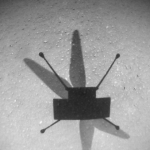Mars’ auroras caught in highest detail ever by Hope spacecraft0
- From Around the Web, Space
- July 7, 2021
The UAE’s Mars orbiter spied discrete auroras hovering over the last vestiges of the Red Planet’s decaying magnetic field.

The UAE’s Mars orbiter spied discrete auroras hovering over the last vestiges of the Red Planet’s decaying magnetic field.

For NASA, taking some risk has paid off handsomely.

With a surface hot enough to melt lead, Venus has been left alone by space agencies for a decade. Now we are about to learn more about its climate – and the chances of life on other planets

Astronomers are revelling at the discovery of a white dwarf that is the largest ever seen. White dwarfs are the collapsed remnants of stars, and this latest find is roughly the size of the Moon and 1.35 times more massive than the Sun. Researchers at the Zwicky Transient Facility at Caltech’s Palomar Observatory made the discovery. To help characterize the dead star, astronomers turned to the W.M. Keck Observatory on Maunakea and University of Hawaiʻi’s Pan-STARRS (Panoramic Survey Telescope and Rapid Response System) on Haleakalā, Maui.

Two astronauts work for seven hours outside Tiangong station, in first of two spacewalks planned for mission

For the first time, astronomers have observed black holes gobbling up neutron stars “like Pac Man.”

THE SAMPLES ARE AN INDICATION THAT MARS MAY HAVE HAD HOSPITABLE CONDITIONS FOR MILLIONS OF YEARS.

On Asteroid Day, a reminder. The ones to worry about are almost never the ones in the alarmist headlines.

The European Space Agency hopes to hire and launch the world’s first physically disabled astronaut and several hundred would-be para-astronauts have already applied for the role, ESA head Josef Aschbacher told Reuters on Friday.

ESO’s fleet of telescopes in Chile have detected the first visible counterpart to a gravitational wave source. These historic observations suggest that this unique object is the result of the merger of two neutron stars. The cataclysmic aftermaths of this kind of merger — long-predicted events called kilonovae — disperse heavy elements such as gold and platinum throughout the Universe. This discovery, published in several papers in the journal Nature and elsewhere, also provides the strongest evidence yet that short-duration gamma-ray bursts are caused by mergers of neutron stars.



